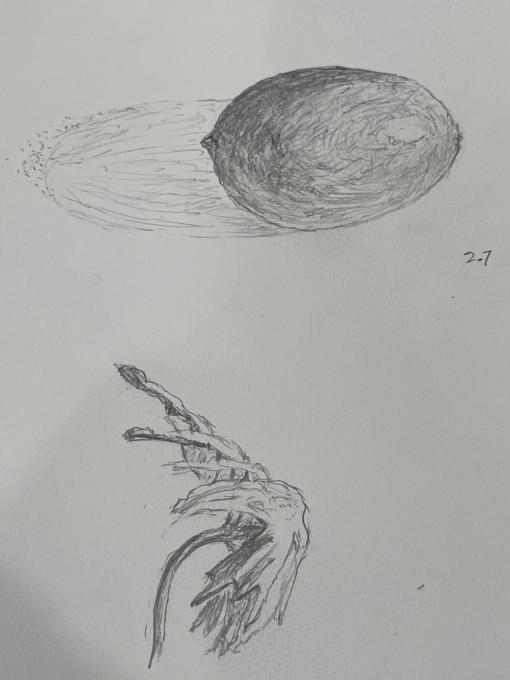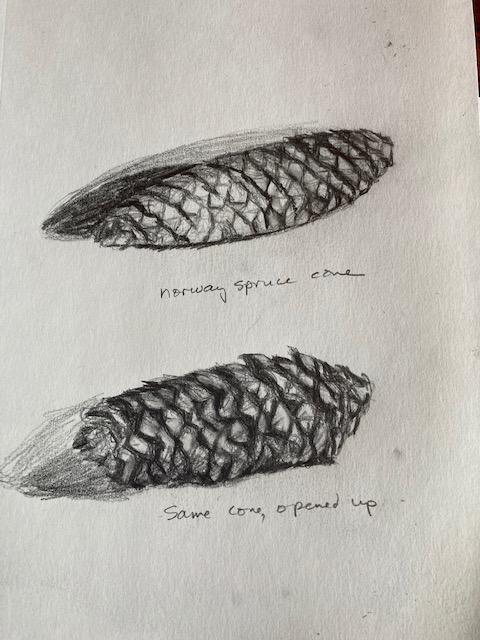The Cornell Lab Bird Academy › Discussion Groups › Nature Journaling and Field Sketching › Illustrating the 3D World
-
 I'm beginning to feel more comfortable drawing or just making my marks. I need more work and practice but enjoy learning the new skills.
I'm beginning to feel more comfortable drawing or just making my marks. I need more work and practice but enjoy learning the new skills. -

-

 Starting to feel a little more comfortable, although having trouble with lines. I get caught up in the lines and shadow and forget to focus on shape. I would like to learn to use lines to convey light, shadow and dimension. This will take practice.
Starting to feel a little more comfortable, although having trouble with lines. I get caught up in the lines and shadow and forget to focus on shape. I would like to learn to use lines to convey light, shadow and dimension. This will take practice.
-
Definitely enjoyed the exercise. It is interesting the interplay of dark and light. My situation was complicated by multiple sources of light. I am getting more comfortable with marks on the page.


-
wow nice looking pear. I like your depth that makes the pear stand up off the page
-
-

-
-

-
Vive ChiaroScuro! Follow the spiral path of Spirit. Surrounded by scuro, I follow the spark - the chiaro of change. As in my pencil drawing, the balance of light and dark is not always easy to see at first - there is no ink pen boundary line - no point of Tao where light defines the darkness - truly shades of gray. I have been deep soul diving in the darkest tones of pain and grief and despair: a Cast Shadow of CoVid. Yet adjacent to it is the Reflected Light of Compassion and the knowledge that we are in this together. Now the Core Shadow of my fears is resocialization - my true emotions have been masked - a kind of protection soon to come off. My hope is that Spring may carry me through the Shadow of my day, so the Light of my granddaughter's smile will herald the Highlight of new beginnings. I follow the Spiral path to see beyond my 3D drawing and peer at possibilities hidden ..................................... on the other side.

-
Beautiful poetry and play on words.
-
-
- Yes, it was easy to see where how to apply drawing techniques.
- Yes, I'm comfortable in putting marks on the page no when sketching.
- It's a little bit difficult to identify the dark and reflection light on some objects easily.


-
I’m struggling with light and dark, especially at small sizes, getting the full range of value. Wonder if I should work larger? Use a harder pencil? — I’m using hb on these. Start lighter? Maybe my 70 year old eyes are part of the problem? Can’t see detail like I used to be able to.



-

-

-
 I like to collect sea shells and beach stones. I am finding it is difficult to use the marks for shading and to create the real shape of the objects. So I need to practice “making the marks”. And I can see that I also need to work on on defining the darkest darks and lightest lights.
I like to collect sea shells and beach stones. I am finding it is difficult to use the marks for shading and to create the real shape of the objects. So I need to practice “making the marks”. And I can see that I also need to work on on defining the darkest darks and lightest lights. -
chiaroscuro

-
I am beginning to enjoy drawing, I’m beginning to see things differently when I look at them. I was captivated by this bluebird at the nesting box so I took a photograph and then drew this while looking at that. I have a long way to go before I can remember something I saw and draw it later. This is fun. It wasn’t at first, it was new and intimidating. I want to work on how things fit together size wise and making things look three dimensional.

-
Cute!
-
Whoa, hold on Awesome dimensional nest box. And, to get the bird looking like a bird and sitting on the box. Chirp, Chirp, Hooray!
-
-
I am definitely more comfortable using these techniques with simply shaped fruit rather than more complicated shapes. I think I need to work on using the different techniques together.

-

-
 Getting more comfortable with this medium. I do have a question: how do you protect your pencil drawings from smearing?
Getting more comfortable with this medium. I do have a question: how do you protect your pencil drawings from smearing? -
 This drawing I did of a fawn shows three dimensional effects - including the reflected light as the jaw turns under the head and the cast shadow of the head on the neck. I was careful to draw in the direction of the form. The original drawing is a little more distinct and the darks are darker. The scanner lightened and blurred the drawing a little. I'm sorry don't have Photoshop now to correct it.
This drawing I did of a fawn shows three dimensional effects - including the reflected light as the jaw turns under the head and the cast shadow of the head on the neck. I was careful to draw in the direction of the form. The original drawing is a little more distinct and the darks are darker. The scanner lightened and blurred the drawing a little. I'm sorry don't have Photoshop now to correct it. -

-
This was a good exercise and also challenging. Will continue practicing to develop 3D skills. I found the lemon difficult but the pear was a better attempt.


-
 This was fun! I like working with shadow and adding 3D effects to my drawings. I drew a banana and a tangelo. :)
This was fun! I like working with shadow and adding 3D effects to my drawings. I drew a banana and a tangelo. :) -
Fun fact: after I drew the tangelo, I ate it! :)
-
-
I followed Fuller's course [and all the info her more experienced students offered], work as she suggested and have fun, be comfortable and not be too self critical. I've enjoyed what I gained, so far, but I've yet to complete the class. Since summer ends in central New England rather quickly, my perennials will survive. The last time I was able to sit outside with my sketch book and watch the birds enjoy that view I was able to do some planning for what was to come. Then the world [except for the birds I can feed in the winter] went wacky. Holly
-
Thanks. Holly. It was very thoughtful of you to give us some very helpful tips. I have my 19 year old cockatiel taking the class with me.
-
-

-
I always thought that the difference between a tight conifer cone and one from the same tree that had opened up had to do with when they fell off the tree. These two drawings are of the same cone on two consecutive days. Bringing the cone inside, where it warmed up and dried, made it start to spring open. Much more of a challenge to draw! I still haven't gotten the scale patterns very well, and need to work on its looking cylindrical, but it was fun to try drawing the differences.

-
Pinecones can actually be used to tell the weather. That is why you are having the spring open problem. Just get it wet again. That should help. When the weather changes, the pinecone will start to close up, if it gets cold or wet it will snap tighter then a drum. Happy drawing
-
Read More:
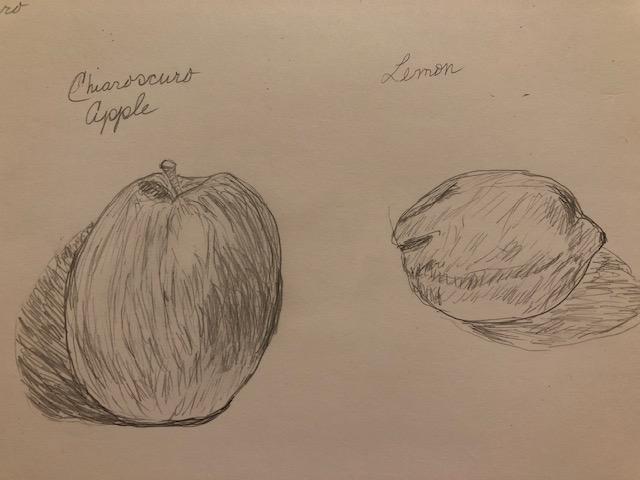 I'm beginning to feel more comfortable drawing or just making my marks. I need more work and practice but enjoy learning the new skills.
I'm beginning to feel more comfortable drawing or just making my marks. I need more work and practice but enjoy learning the new skills. 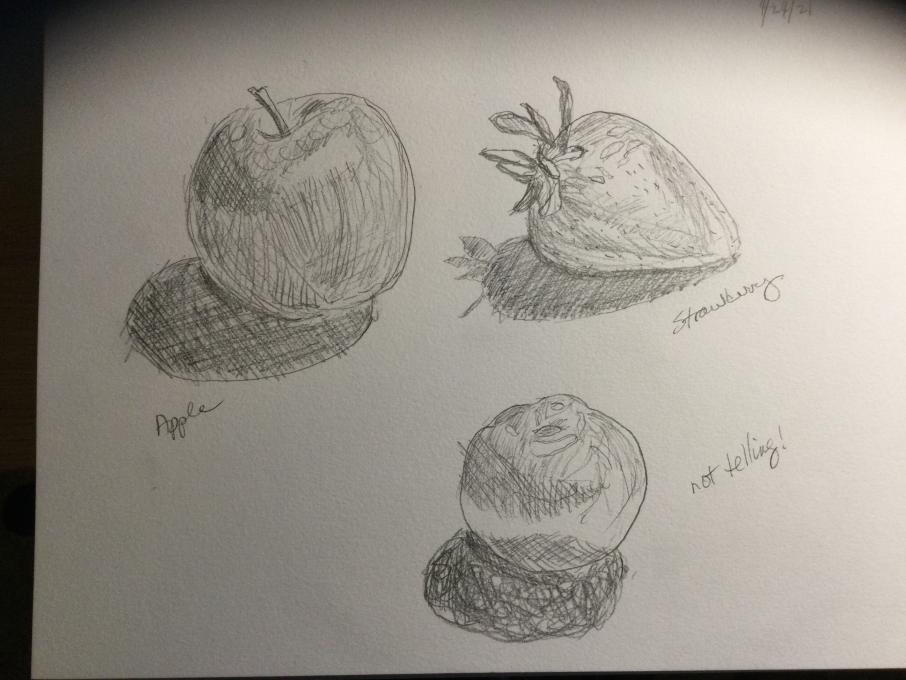
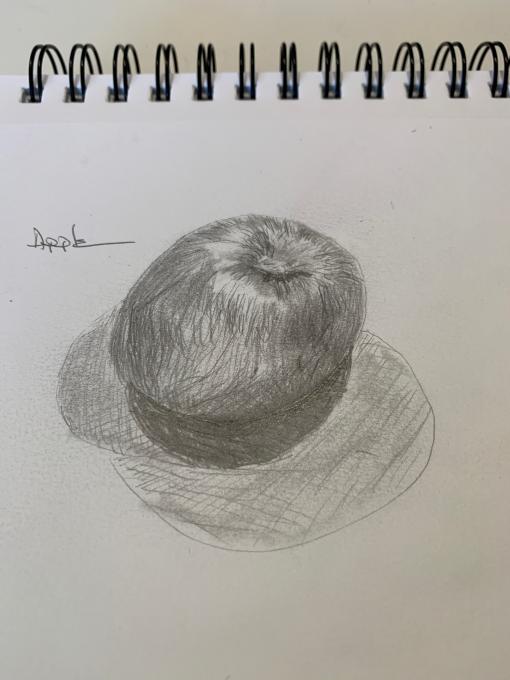
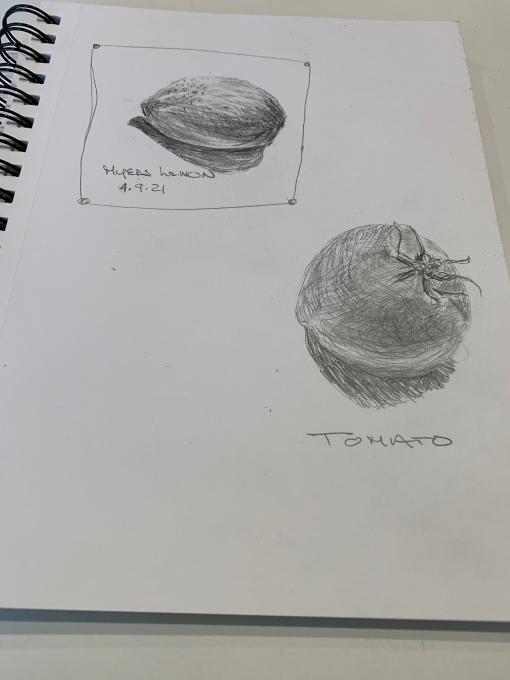 Starting to feel a little more comfortable, although having trouble with lines. I get caught up in the lines and shadow and forget to focus on shape. I would like to learn to use lines to convey light, shadow and dimension. This will take practice.
Starting to feel a little more comfortable, although having trouble with lines. I get caught up in the lines and shadow and forget to focus on shape. I would like to learn to use lines to convey light, shadow and dimension. This will take practice.
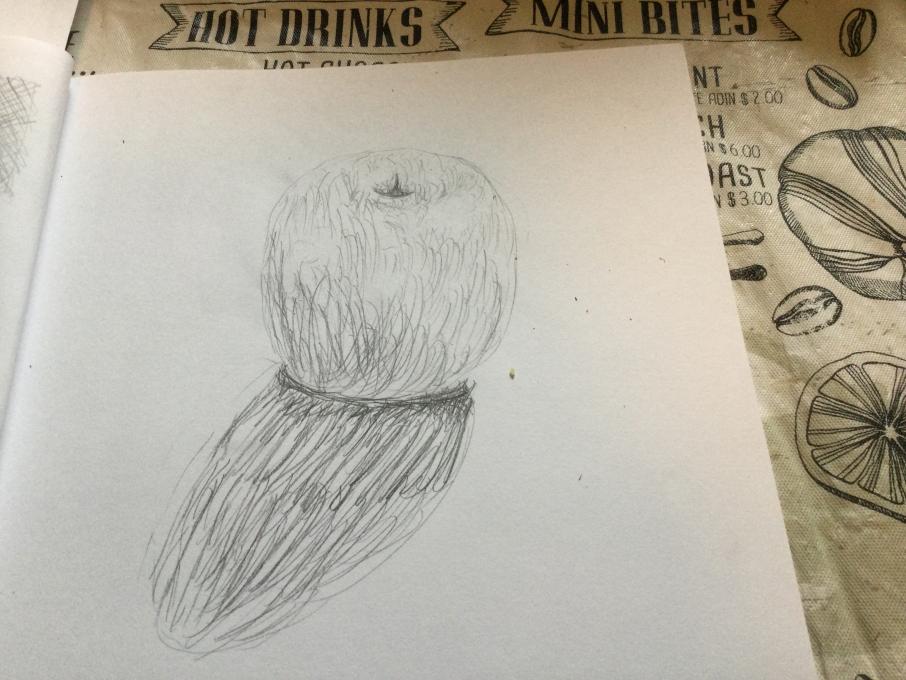
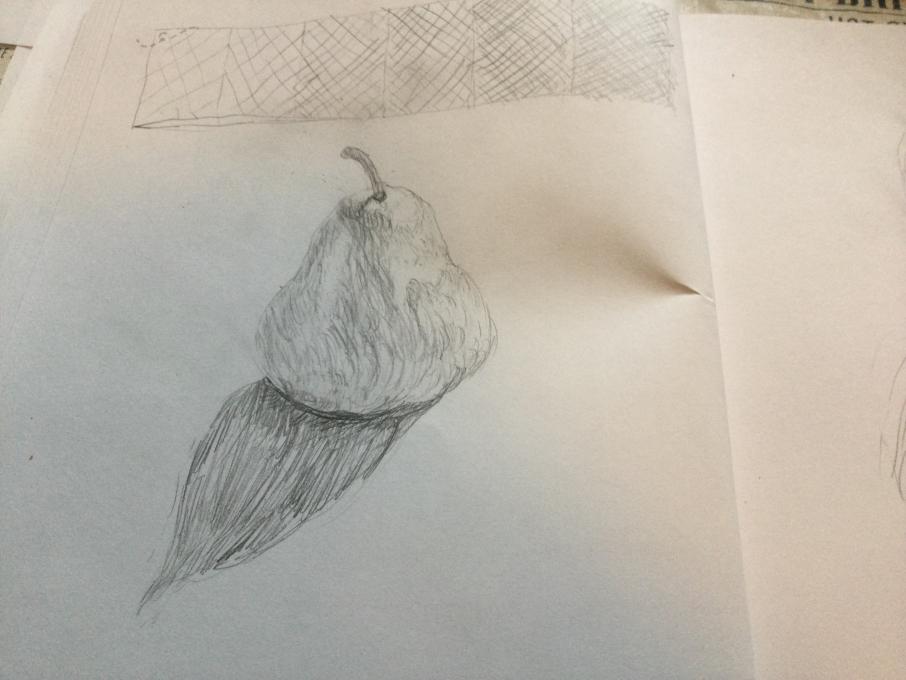
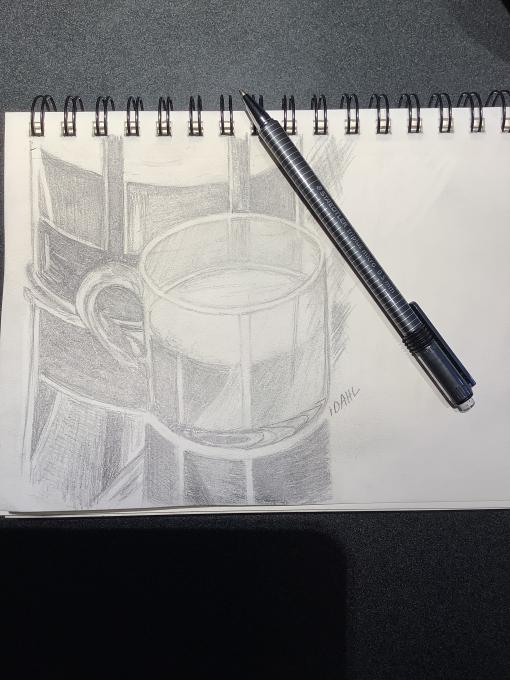
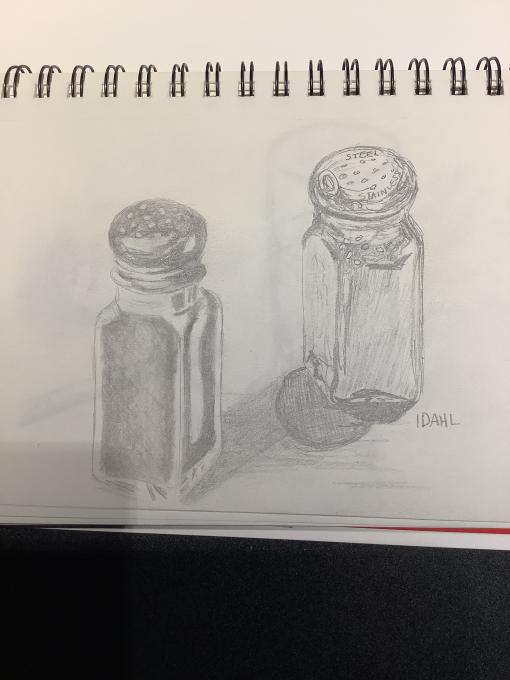
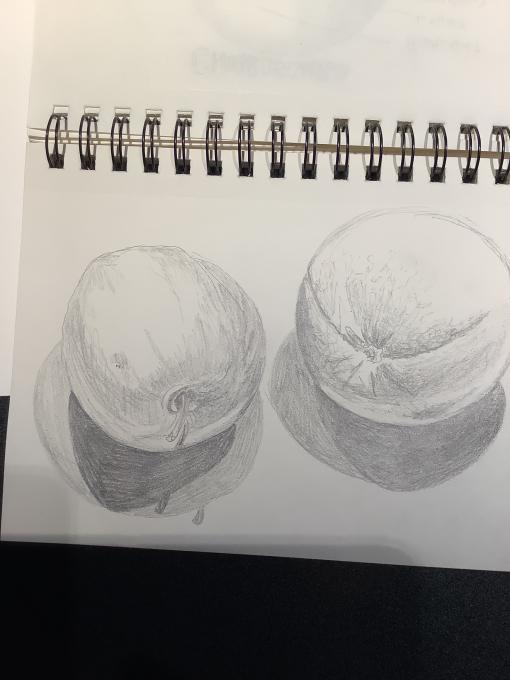
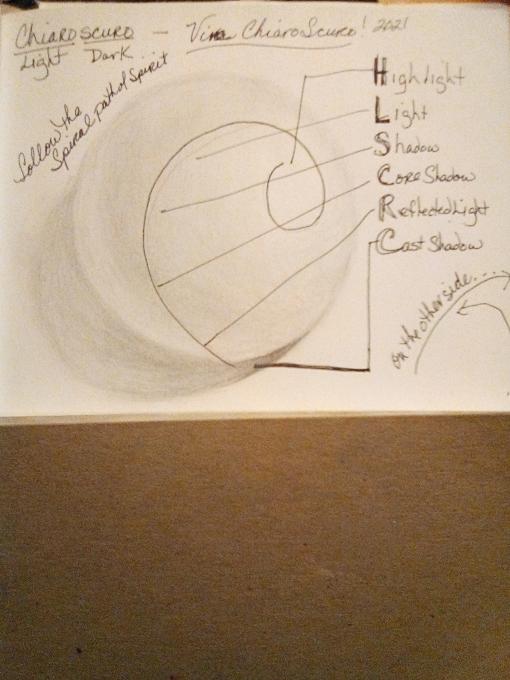
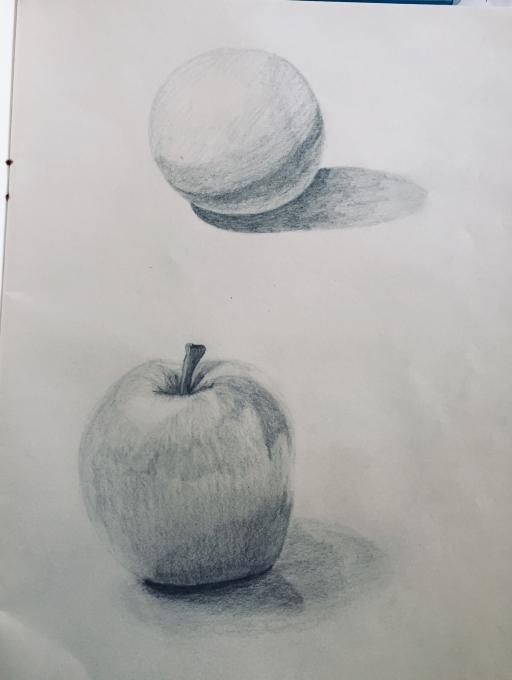
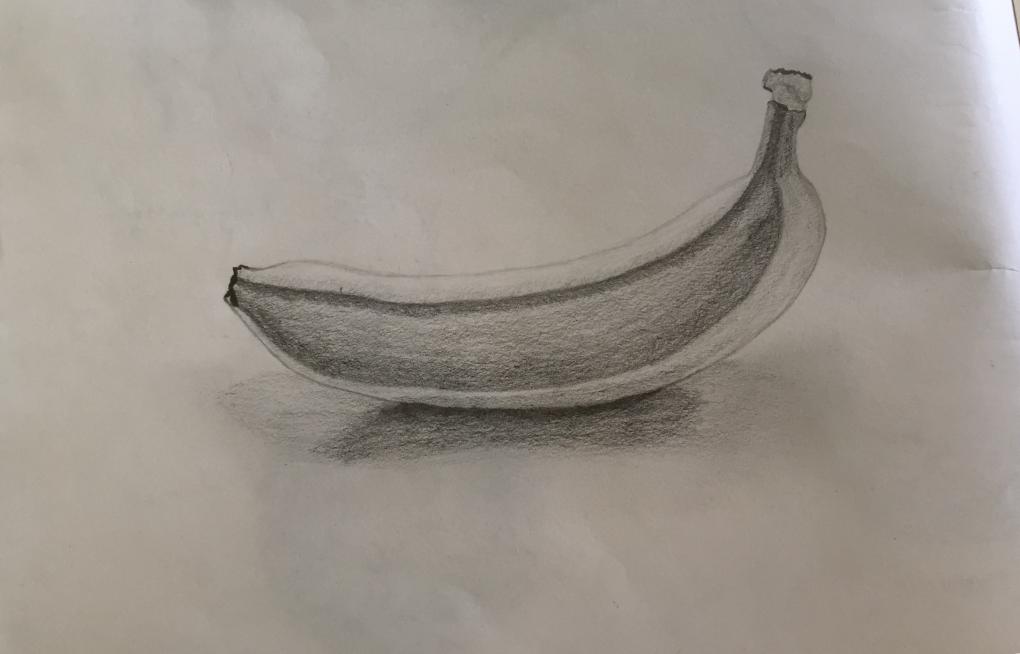
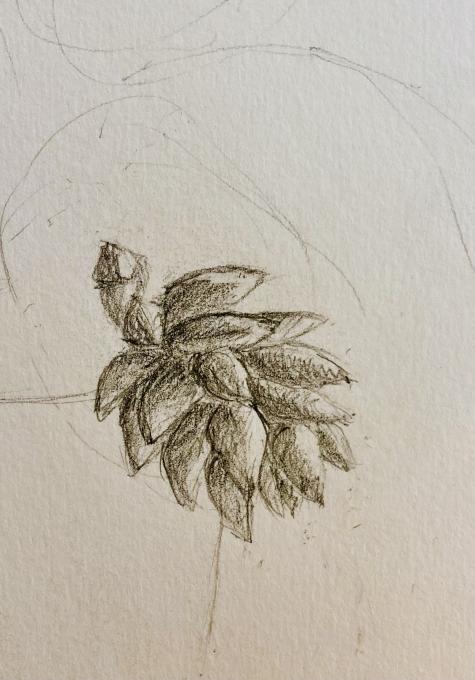
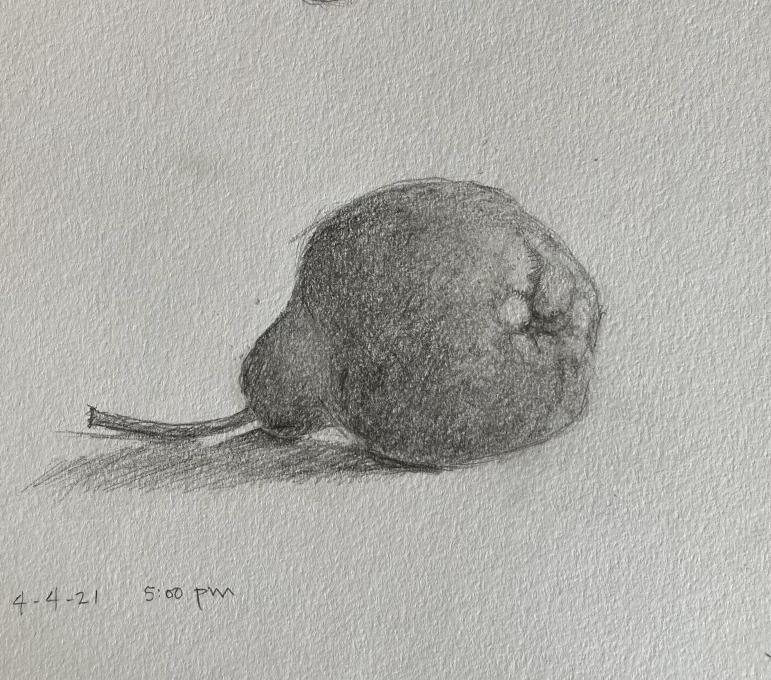
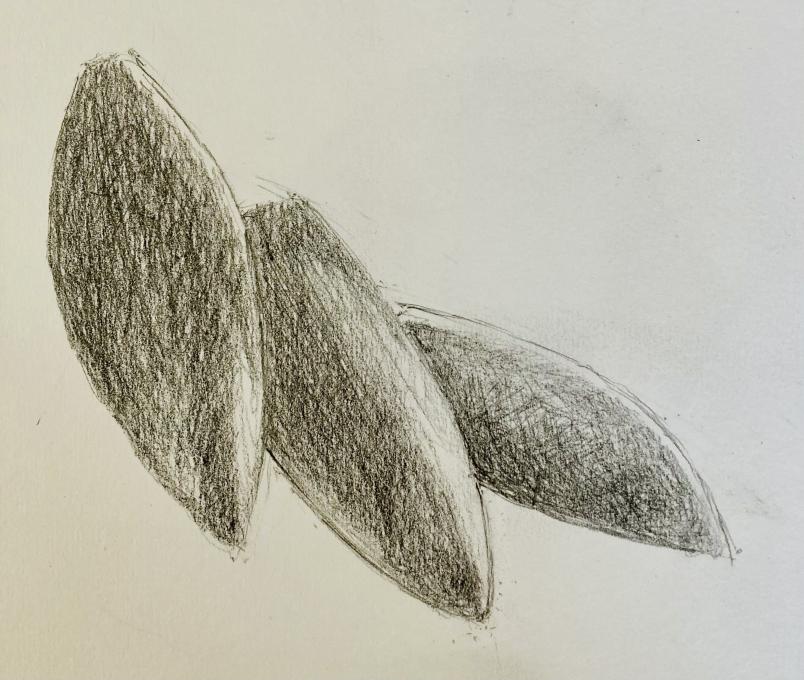
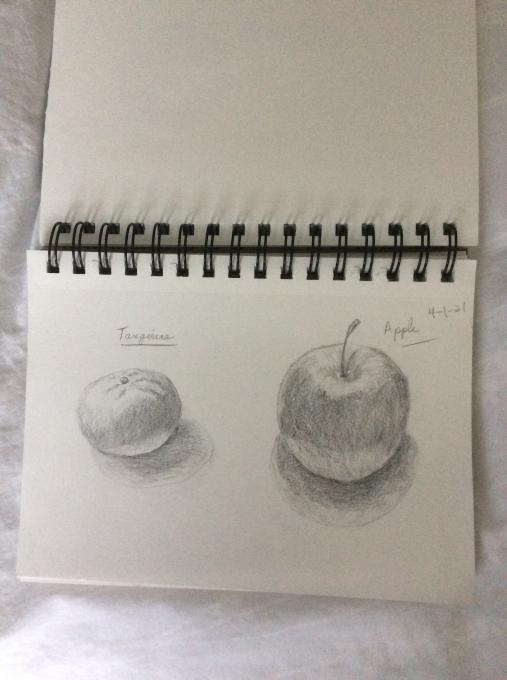
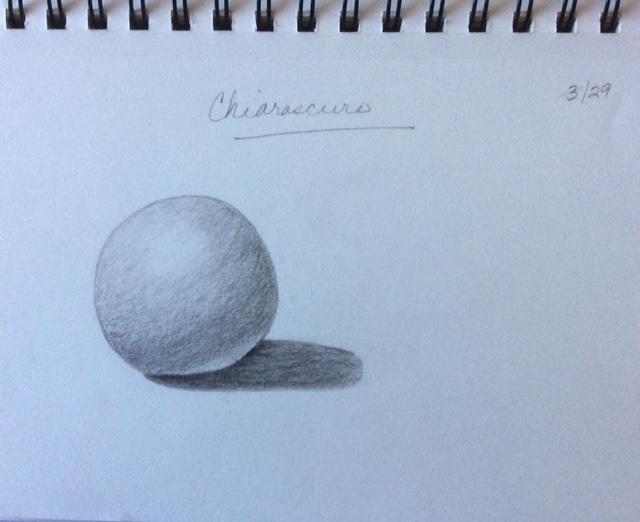
 I like to collect sea shells and beach stones. I am finding it is difficult to use the marks for shading and to create the real shape of the objects. So I need to practice “making the marks”. And I can see that I also need to work on on defining the darkest darks and lightest lights.
I like to collect sea shells and beach stones. I am finding it is difficult to use the marks for shading and to create the real shape of the objects. So I need to practice “making the marks”. And I can see that I also need to work on on defining the darkest darks and lightest lights. 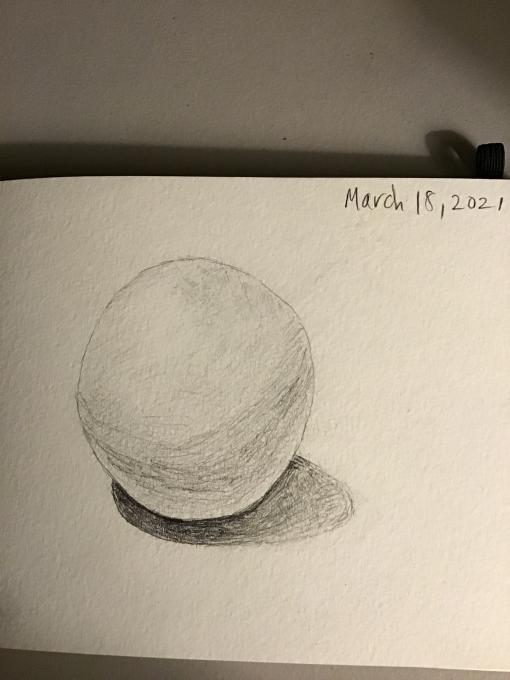
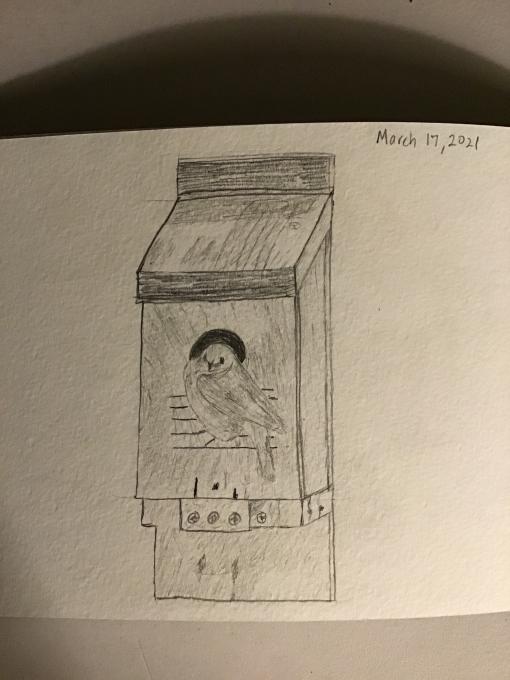

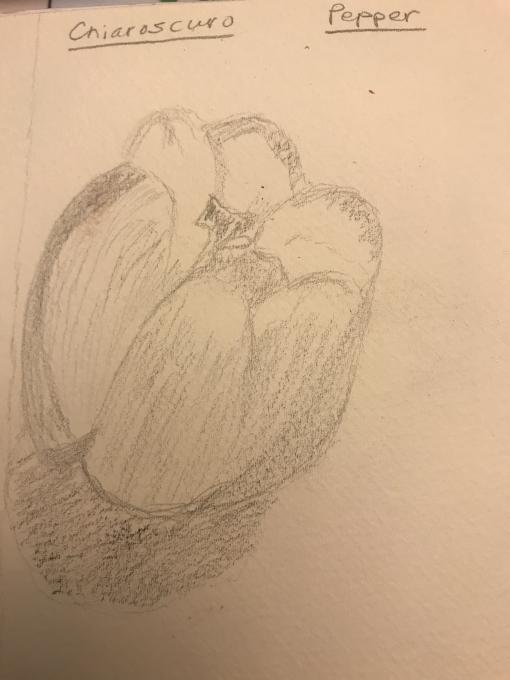
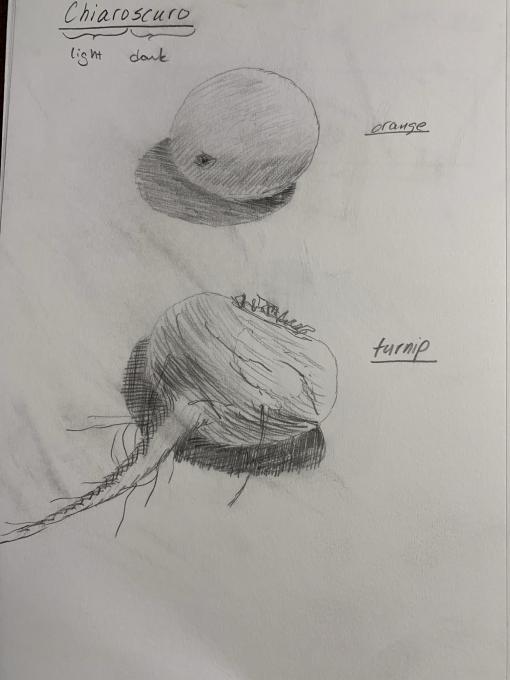 Getting more comfortable with this medium. I do have a question: how do you protect your pencil drawings from smearing?
Getting more comfortable with this medium. I do have a question: how do you protect your pencil drawings from smearing? 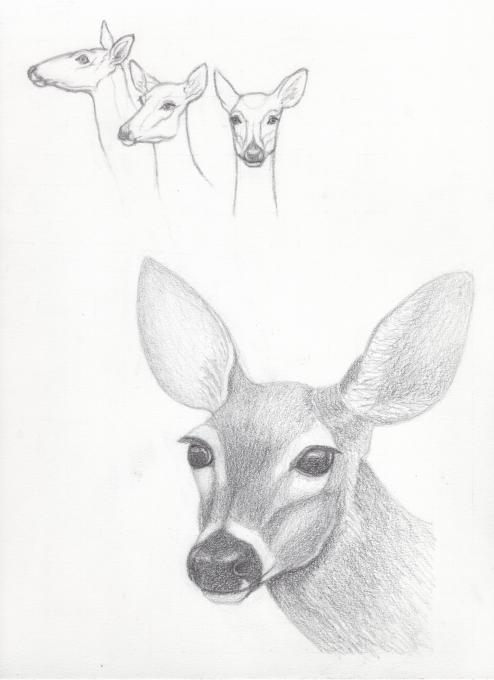 This drawing I did of a fawn shows three dimensional effects - including the reflected light as the jaw turns under the head and the cast shadow of the head on the neck. I was careful to draw in the direction of the form. The original drawing is a little more distinct and the darks are darker. The scanner lightened and blurred the drawing a little. I'm sorry don't have Photoshop now to correct it.
This drawing I did of a fawn shows three dimensional effects - including the reflected light as the jaw turns under the head and the cast shadow of the head on the neck. I was careful to draw in the direction of the form. The original drawing is a little more distinct and the darks are darker. The scanner lightened and blurred the drawing a little. I'm sorry don't have Photoshop now to correct it. 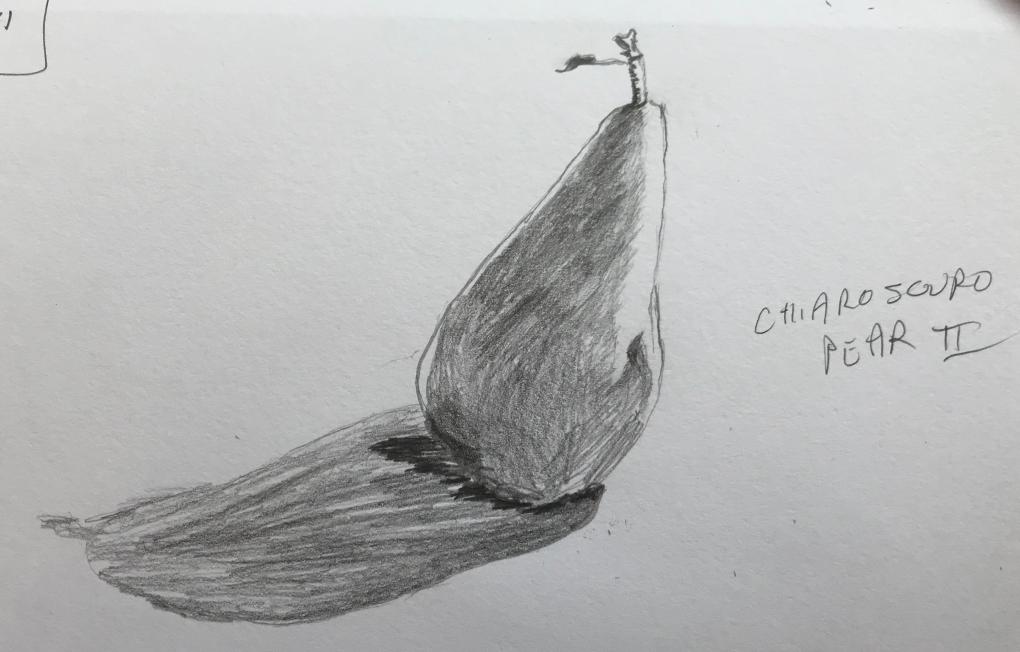
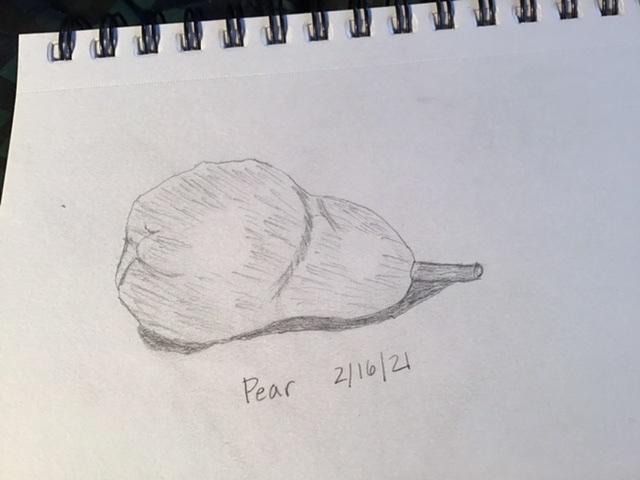
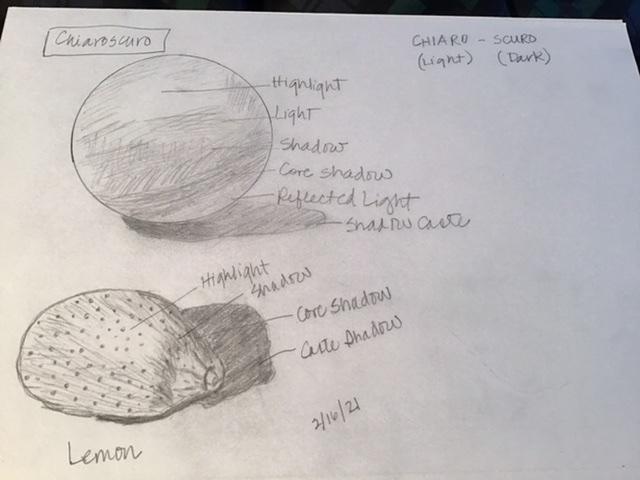
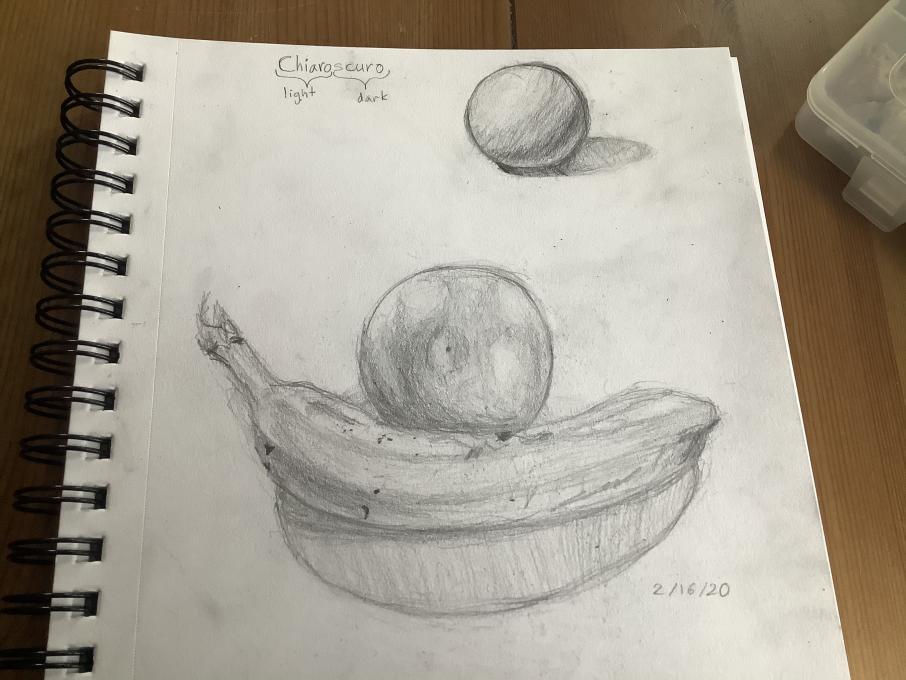 This was fun! I like working with shadow and adding 3D effects to my drawings. I drew a banana and a tangelo. :)
This was fun! I like working with shadow and adding 3D effects to my drawings. I drew a banana and a tangelo. :) 